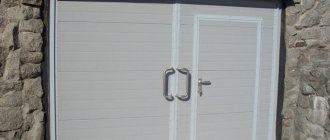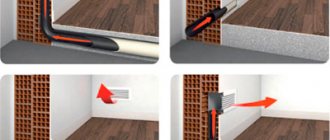How to insulate entrance doors
The plastic structure, by and large, is a frame made of a supporting metal-plastic profile with plastic or glass inserts. The first ones, as a rule, are arranged according to the sandwich principle and include a thermal insulation layer. Glass windows are designed as hermetic windows: a mixture of inert gases is pumped between the panes, which act as insulation. That is, the design, in principle, ensures heat retention in the room.
It is important to achieve not only thermal insulation of the door block itself, but also the tightness of the structure, that is, a tight fit. The entrance insulated plastic door is lined around the perimeter with a sealing rubber tape. For greater density, it is recommended to lubricate the tape with a special lubricant.
It is possible and necessary to insulate plastic doors for the winter in a private home based on the cause of heat loss.
- Oddly enough, the first factor here is glass inserts. Despite the tightness of this design, glass itself does not help retain heat in any way. The heat insulator is air, an inert gas, or even a vacuum between the glasses. The main reason for the dysfunction of such a gasket is a violation of the tightness, for example, when the sealant is damaged. In this case, you need to replace the glass inserts on the entrance leaf with sealed ones.
To make a street door of this type insulated, you can install energy-saving glass. They retain heat better under any circumstances, but this solution is more expensive.
- The second reason is poor sealing of gaps during installation. Such cracks need not just be closed, but thermally insulated and carefully sealed. To fix the situation with your own hands, you need to remove the mounting foam by clearing the gap. Then you need to fill the gap as tightly as possible with polystyrene foam, and then foam or plaster.
In your own home, you do such repairs yourself, since there is nothing complicated about this work. In an office building, renovations are, of course, carried out by specialists.
- The third reason, equally common in both a private home and an office building, is sagging street doors. Over time, any product wears out and this fully applies to a plastic door. In this case, insulating for the winter means adjusting the sash.
First, they determine exactly how the door sagged, since in appearance it may be completely invisible. Consider the seal: in places of displacement it will be more strongly crushed or even damaged. Having correlated the location of the damage with the displacement of the entrance leaf, they begin to make adjustments in order to make the door insulated.
So, if the upper corner of the sash has shifted and no longer fits tightly, use a hex key to tighten the screw on the top hinge, having first removed the plug from it. If the bottom corner sags, do the same with your own hands with the bottom loop.
In cases where the street sash falls down under its own weight, vertical adjustment is carried out: to do this, turn the screws on the lower hinges clockwise.
We insulate a plastic door
Installed according to all the rules and properly adjusted, the plastic door structure does not need insulation. Therefore, before insulation is carried out, it is necessary to determine the source of heat loss.
- One way to insulate is to eliminate cracks under the door frame. It is recommended to fill the voids with thermal insulation material or foam for installation. Plaster the surface or use any finishing material. These simple steps will help get rid of cold air from entering the room.
- To achieve tightness and thermal insulation of the structure, the door block should be sealed around the perimeter with a sealing rubber tape. To ensure a tighter press with a special lubricant.
- If the door leaf consists of glass inserts, then the cause of cold entering the home may be a violation of the tightness of the seals. In this case, they need to be replaced. The best solution would be to replace the old glass sheet with an energy-saving double-glazed window, which retains heat much more efficiently.
- Poorly sealed cracks during the installation of a plastic door must be filled with polystyrene foam and foamed with polyurethane foam. Then carefully plaster and then paint.
- Sagging of the sash can be eliminated by adjusting it. To do this, you need to consider the seal, which in places of displacement will be damaged or severely crushed. This will help you figure out where the door is sagging - at the bottom or top. If there is a shift in the upper corner of the sash, you need to tighten the screw on the upper hinge; if in the lower, then tighten the screw on the lower hinge. Such actions are performed with a hex key, after removing the plug from the hinges. Vertical adjustment is made when the door leaf lowers under its own weight. To do this, turn the screws located on the lower hinges clockwise.
- If the plastic structure has mechanical damage that cannot be repaired or restored, the best solution would be to purchase new doors.
How to insulate a plastic balcony door
A metal-plastic structure of this kind has the same tightness indicators as a window. With high-quality installation and materials, the only thing you have to do in the winter is to adjust the tightness of the sash so as not to leave even the smallest gaps.
However, a plastic door to the balcony can also cause heat loss.
- Just like a street door, a balcony door can be installed incorrectly. In this case, gaps remain between the box and the wall or floor, through which the cold penetrates both the apartment and the private house. You can correct the situation and make the plastic door insulated yourself. Such a gap needs to be cleared of sealing material and even expanded somewhat. Then the gap is sealed with polystyrene foam and sealed with polyurethane foam. After drying, the remaining foam is cut off and the gap is sealed in accordance with the wall decoration.
- You can also insulate a plastic door to a balcony using insulation. The latter wears out over time, in addition, it may not be of very high quality to begin with. In this case, the material should be replaced. First, the old seal is removed from the groove, then the groove is cleaned and degreased with white alcohol. Treat the perimeter of the opening with special glue, and then insert a new seal for the balcony door. Excess tape is cut off and the ends are glued together.
Reasons why cold gets into a room with a balcony block
A standard door to a balcony or loggia can be of two types: with full glazing and partial, when the panel at the bottom is covered with a plastic shield. A design with incomplete glazing is warmer - plastic has much lower thermal conductivity than window glass.
Before insulating the balcony door, you should identify the places through which the cold penetrates into the room. The main ways that cold air enters the apartment are places of defects or individual elements of the balcony block:
- Glazing for a balcony door. The lowest protection against cold is provided by ordinary sheet glass and large-area single-chamber double-glazed windows (fully glazed balcony door).
- Gaps between the canvas and the box. If the insulation loses its performance qualities, gaps may appear between the sheet and the frame, and cold air will enter the room.
- Loose fit of the door leaf to the frame. If the door has moved away from the frame, then a gap may appear in the hinge area that the seal cannot close - cold air will flow through it.
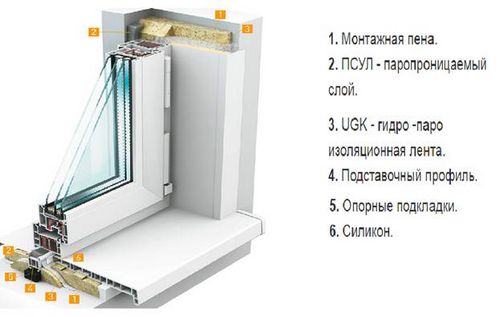
Rice. 2 Scheme of installation and thermal insulation of the balcony block
- Poor quality assembly of the balcony block. Typically, a block for a balcony is assembled by connecting two parts - a window frame and a door frame. To do this, a sealing strip is laid between the walls to be connected or foam is applied to the surface, then both parts are connected with metal screws. If the seal was not applied or the screws came apart during installation, then cold air will penetrate into the gap between the frame of the door leaf and the window block.
- Poor quality installation of the balcony block in the opening. Sometimes it happens that for the sake of savings or a shortage of mounting foam, the balcony block is fixed in the opening not with a continuous strip of foam, but in separate sections. Also, polyurethane foam can decompose and crumble over time, and if the block was installed without a vapor barrier tape, cold will enter the room through the empty space. In this case, outside air enters the room through the gap between the external slope and the frame of the balcony block.
- Another reason for the penetration of cold air into the room is a violation of technology. The plastic frame has poor adhesion with cement mortars used for external slopes. When installed correctly, a pre-compressed self-expanding sealing tape (PSUL) is glued around the perimeter of the balcony block box from the outside, which seals the gap between the outer slope and the frame of the balcony block. In its absence, due to poor adhesion of the plastic with the cement surface, cold air will flow through the gap between the slope and the block box.
The main reasons for installing a threshold on a balcony
In fact, the threshold on the balcony door performs several tasks:
- The aesthetic appearance of the entrance to the balcony is improved. Using the threshold, a smooth transition is made from the floor of the main room to the exit to the balcony.
- Even if the balcony is glazed, the threshold on the balcony door serves as an additional obstacle to cold air entering the room. If the balcony is not glazed, then the threshold not only serves as heat-retaining protection, but also prevents moisture and dampness from entering the room.
- Safety and ease of movement. The chances of tripping over the high threshold of a balcony door are much greater in cases where there is no threshold installed on the balcony.
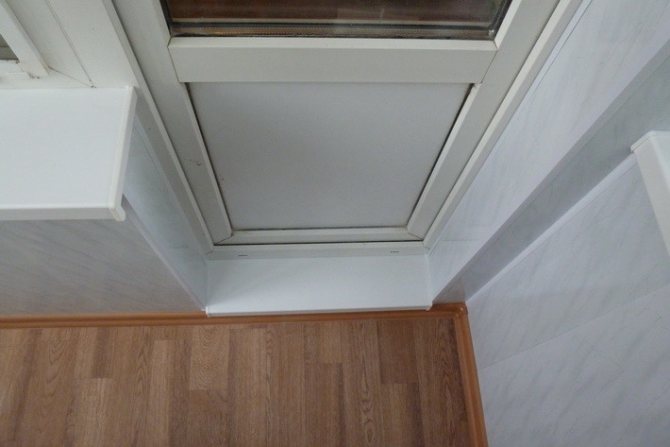
Making a threshold for a balcony with your own hands is quite a feasible task even for a novice and inexperienced builder. But here, as in any construction business, there are professional nuances, the knowledge of which cannot be avoided in order to get a successful result of your homemade act.
Methods for insulating a plastic balcony door
When deciding how to insulate a plastic balcony door, you should first pay attention to its adjustment. Plastic doors have a design that allows them to be adjusted for the purpose of insulation and replacement of individual elements; the list of main works is as follows:

Rice. 4 Installation of a seal to insulate a wooden balcony door
- Replacing the seal. The seal may lose its elasticity and shape over time - in this case, it should be dismantled and a new one installed; replacement should be done on the door leaf and in the opening.
For installation, you should use door sealing tapes designed for the same type of profile. It is advisable to use a chamber type (their design provides a tighter fit than the petal type), the work is carried out in the following sequence:
- They dismantle the plastic balcony door by removing the decorative trim from the top hinge, after which they remove the pin from the hinge, pulling it down with pliers and tapping it with a hammer. Open the door slightly and remove it from the bottom hinge.
- Remove the old seal, moving the door fasteners aside with scissors, and install a new one in its place, gluing it at the top center.
- Do the same with the door frame seal - remove the old seal and replace it with a new one, gluing it at the top in the middle.
In order not to confuse the side of the tape during installation, you should remember the location of the old insulation or install the new one with the wider side outward.
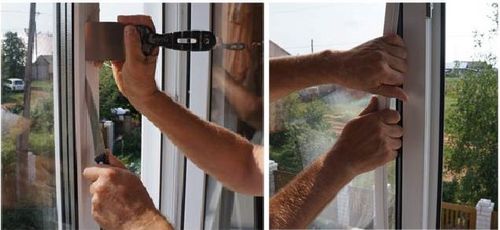
Rice. 5 Insulating a balcony door by replacing double-glazed windows
- Replacement of glazing. The solution to the question of how to insulate a balcony door for winter may be to install energy-saving glass instead of regular glass. This is effective in casements with continuous glazing and can reduce heat loss several times. Low-E low-emissivity glass with magnetron sputtering of tiny particles of metals and oxides reflects heat back into the room; its installation in a single-chamber or double-glazed window increases its energy savings by 70%.
Heat savings are also provided by another type of energy-saving double-glazed windows - with argon between the chambers. Replacement of packages is carried out by simply removing the beads.
Insulation of a plastic door using the upholstery method.
For this type of work, felt, foam rubber, rags, tow or other soft material are used as insulation, which is evenly distributed over the surface to be insulated. After that, the decorative material, it can be leather or its substitute, thick fabric, insulation is covered over all surfaces and secured with glue or mastic.
- Insulation of a wooden door using the upholstery method is carried out in a similar way, with the only difference being that the covering material is secured using nails or self-tapping screws, and glazing beads or other plates.
- Insulation of a plastic door by sealing the junction points.
During the operation of doors made from PVC components, quite often the cause of heat leakage is the loose connection of the leaves to the doorway. To eliminate this malfunction, the hinges are adjusted, and the surface of the rubber bands installed at the junction points is lubricated.
If there are gaps between the PVC opening and the wall surface, the latter are filled with polyurethane foam or other material (expanded polystyrene or similar).
- Insulation of a plastic door using additional glazing. As you know, various types of double-glazed windows are used in PVC structures. If a plastic door has a double-glazed window, but it is a source of heat loss, then it can be replaced with another, energy-saving one or with a larger number of chambers.
- Insulation of a wooden door using the glazing method. This method can be used in all types of wooden doors, the reason for this is that glass is a good heat insulator, and wood allows for fairly simple installation. The glass is cut to the required size, after which insulation is laid around the perimeter of the area on which it will be laid. Glass is placed on the insulation layer, which is secured to the surface using glazing beads and nails. The gaps that form between the door surface and the glass are eliminated by using a special putty.
- Insulation of double wooden doors. If there are double doors, insulation of such a structure can be done by insulating the space between the doors. To do this, you can use cotton wool, foam rubber, polystyrene foam or other synthetic board-type insulation. In this case, the insulation is laid between the internal and external doors, where it is secured by using spacer elements (cuts of lumber, profiles made of various types of materials). The space between the doors can also be used as an additional refrigerator cabinet. In this case, shelves are mounted in the space between the doors, on which you can lay out preparations for the winter or other long-term storage products that are not afraid of the cold and are able to absorb it. In this case, the usable area of the room increases, and the products are stored longer.
The disadvantage of such insulation methods is that the laid insulation and mounted shelves with products make it difficult to use the balcony.
Insulating a wooden door on a balcony
The insulation of a wooden balcony door is carried out by analogy with a plastic one - you can replace the insulation with a new one or the double-glazed window with a heat-resistant modification. If the door has a simple design with several handles and allows air from the street to pass through, you can increase the pressure by moving the linings in the box to fix the handles.
When deciding how to insulate a wooden balcony door or its plastic equivalent, you should keep in mind that the choice of methods is limited. You can change the seal and glass unit, carry out adjustment work - if the result is unsatisfactory, you will have to change the door or door frame profile along with the leaf.

The main condition that determines the service life of plastic balcony doors is the presence of high-quality fittings - when opening and closing them.
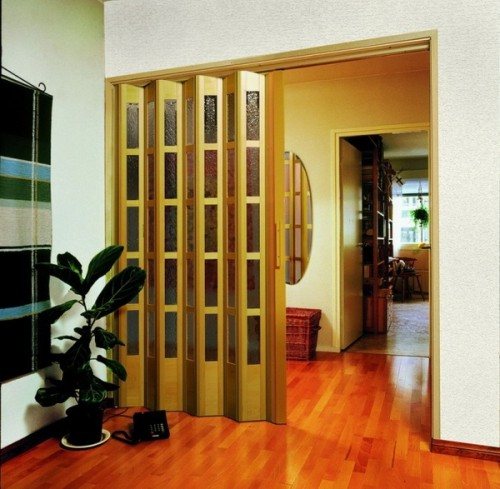
Most owners of houses and apartments are faced with a situation where the door creaks. This is an unpleasant sound that causes constant inconvenience.





